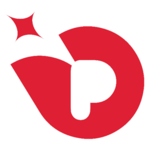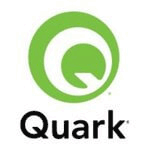Description

Ceros

CHILI publisher
Comprehensive Overview: Ceros vs CHILI publisher
Ceros and CHILI Publisher are two innovative digital design and content creation platforms that cater to different segments and needs within the digital content space. Here's a comprehensive overview of both:
Ceros
a) Primary Functions and Target Markets
- Primary Functions: Ceros is a cloud-based design platform that enables marketers and designers to create interactive, engaging content without needing to write any code. Its offerings include tools for creating interactive infographics, eBooks, microsites, lookbooks, and more.
- Target Markets: Ceros primarily targets marketers, creative agencies, and in-house design teams across various industries including retail, technology, healthcare, and financial services. Its focus is on brands looking to create immersive customer experiences and enhance engagement through rich, interactive content.
b) Market Share and User Base
- Market Share: The specific market share of Ceros isn't publicly detailed, but the platform has grown in popularity among large corporations and marketing agencies for its ability to drive customer engagement.
- User Base: Ceros is used by numerous large enterprises and global brands, such as Red Bull, United Airlines, and Tesla, indicating its strong foothold among major players looking for high-impact digital content.
c) Key Differentiating Factors
- Interactivity and No-Code: One of the most significant aspects of Ceros is its strong focus on interactivity coupled with a no-code approach, allowing designers who might not be familiar with programming to create complex digital content.
- Analytics and Insights: Ceros provides robust analytics tools that help users understand how their content is performing in terms of viewer engagement and interaction, which is crucial for refining marketing strategies.
- Comprehensive Design Flexibility: It supports a variety of rich media types and interactive elements, providing a high degree of design flexibility.
CHILI Publisher
a) Primary Functions and Target Markets
- Primary Functions: CHILI Publisher is an online document editor that enables the creation of graphic-rich content, primarily in the context of marketing materials, publications, and packaging. It allows for the customization and adaptation of content for different formats and channels.
- Target Markets: The platform is aimed at brands, marketing agencies, printers, and packaging companies. It's particularly valuable for organizations requiring high-volume, scalable content production, including customization and localization.
b) Market Share and User Base
- Market Share: CHILI Publisher is recognized in the print and packaging industry, where it serves a niche but significant segment that requires detailed customization and high-volume output.
- User Base: CHILI interacts with clients from various sectors including packaging, print service providers, and retail sectors, underscoring its strength in areas that require precise template management and document versioning.
c) Key Differentiating Factors
- Template-Based Customization: CHILI Publisher shines with its focus on template-based content creation that allows for high scalability and efficient customization, thus being very effective for print and packaging needs.
- Variable Data Printing (VDP): It supports VDP, which is crucial for producing customized print runs where elements can be tailored on a per-document basis, such as personalized marketing materials.
- Integration Capabilities: The platform can be seamlessly integrated with other systems and workflows, which is important for businesses that need to connect diverse aspects of their content production process.
Comparative Analysis
- Interactivity vs. Customization: Ceros leads with interactivity and immersive design capabilities, while CHILI Publisher focuses on customization and print-ready outputs.
- Target Alignment: Ceros is more digital and marketer-focused, aiming at engagement and customer experience. CHILI focuses on precision in print and adaptable content, suitable for industries reliant on print media and market localization efforts.
- Technology Differentiation: While Ceros offers analytics for digital engagement improvements, CHILI Publisher excels in document editing efficiency and integration for streamlined workflows in print and packaging.
Both platforms have carved out distinct niches by focusing on unique facets of the digital content creation process, with Ceros emphasizing interactive digital experiences, and CHILI Publisher excelling in print customization and scalability.
Contact Info

Year founded :
1999
Not Available
Not Available
Mexico
http://www.linkedin.com/company/desarrolloenproteccioncivilzonacentro

Year founded :
Not Available
Not Available
Not Available
Not Available
Not Available
Feature Similarity Breakdown: Ceros, CHILI publisher
When comparing Ceros and CHILI publisher, both of which are design platforms, it's essential to examine their features, user interfaces, and unique attributes. Here's a feature similarity breakdown:
a) Core Features in Common
-
Design and Editing Tools:
- Both platforms offer robust design and editing tools that allow users to create interactive and dynamic content without the need for coding.
- They provide a variety of templates and pre-designed elements which speed up the design process.
-
Interactive and Rich Media Support:
- Both Ceros and CHILI publisher support interactive elements, enabling the creation of engaging digital content with animations, videos, and other multimedia enhancements.
-
Cloud-Based Platforms:
- They operate as cloud-based solutions, allowing users to work from different locations and devices, and facilitating easy collaboration among team members.
-
Real-Time Collaboration:
- Both platforms support collaborative design processes, allowing multiple users to work on the same project simultaneously with real-time updates.
-
Integration Capabilities:
- Ceros and CHILI publisher offer integrations with various third-party software and content management systems, enhancing their versatility in different workflows.
b) User Interface Comparison
-
Ceros:
- Ceros is known for its intuitive and user-friendly interface that is designed to cater to creative professionals who prioritize visual storytelling.
- Its drag-and-drop functionality makes it easy for users to create interactive content without needing technical skills.
- The platform often emphasizes ease of use to rapidly deploy interactive content.
-
CHILI Publisher:
- CHILI publisher’s interface is typically more feature-rich and may appear more complex due to its capabilities with variable data printing and content automation.
- It is tailored more towards efficiency and high-volume work environments, which might require a steeper learning curve.
- The interface is highly customizable, catering to enterprise-level needs with a focus on precision and control.
c) Unique Features
-
Ceros:
- Focus on Interactive Content: Ceros excels in creating highly interactive digital content, particularly for marketing purposes, such as immersive experiences for web and mobile.
- Simplified User Experience: The platform is highly regarded for its ease of use and the speed at which users can produce visually striking content.
-
CHILI Publisher:
- Variable Data Printing: One of CHILI publisher’s standout features is its support for variable data printing, allowing users to automate the production of customized outputs in high volume.
- Advanced Template Management: It offers extensive capabilities for template management and design automation, making it ideal for brands that need consistent, yet customizable content across multiple channels.
- Integration with Print Production Workflows: CHILI publisher is often integrated into larger print production workflows and offers prepress functionalities suited for print-ready material.
In summary, while both platforms share core features that support interactive and collaborative content creation, they cater to slightly different audiences and use cases, with Ceros focusing on ease of use and interactive experiences, and CHILI publisher emphasizing automation, precision, and scalability.
Features

Interactive Content Creation
Analytics and Insights
Design Without Code
Collaboration Tools
Publishing and Sharing
Publishing Options

Integration Capability
Output Quality Control
Template Customization
Collaboration Tools
Template Creation and Management
Collaboration and Review
Automated Layout Adjustments
Integration Capabilities
Best Fit Use Cases: Ceros, CHILI publisher
Ceros and CHILI publisher are both dynamic tools used in content creation and editing but serve distinct purposes and scenarios. Here's a breakdown of their best-fit use cases:
Ceros
a) Types of Businesses or Projects Best Suited for Ceros:
-
Marketing Agencies: Ceros is ideal for agencies that need to create highly interactive and engaging content for brand clients. Its no-code platform allows marketers and creatives to design content like interactive infographics, lookbooks, and digital magazines without relying heavily on development resources.
-
E-commerce and Retail: Brands looking to enhance their online shopping experience can use Ceros to create interactive product experiences that can display on their websites, helping to drive engagement and sales.
-
Media and Publishing: Publishers wanting to provide a richer digital reading experience can leverage Ceros to create dynamic articles and multimedia storytelling that captivate their audiences.
-
Corporate Branding Teams: Companies focused on building compelling brand narratives can use Ceros for dynamic presentations, microsites, and annual reports that move beyond static PDFs or slide decks.
d) Industry Verticals or Company Sizes:
- Mid-sized to Large Enterprises: Typically, businesses with dedicated marketing teams or resources that frequently publish digital content find Ceros beneficial.
- Creative and Design-Oriented Sectors: Industries where visual engagement is key, such as fashion, travel, and entertainment, benefit most from Ceros's capabilities.
CHILI Publisher
b) Scenarios Where CHILI Publisher is Preferred:
-
Print and Digital Publishing: CHILI publisher excels in managing both print and digital assets. Businesses in need of precision, such as producing high-quality print brochures, packaging, and marketing materials, benefit significantly from CHILI's detailed editing capabilities.
-
Retail and Franchises: Organizations with a distributed presence, like franchises, use CHILI Publisher to maintain brand consistency while allowing local customization of marketing materials.
-
Marketing Service Providers (MSPs): Those who provide marketing services to multiple clients can use CHILI Publisher to implement intelligent templates, streamlining client output and ensuring brand integrity.
-
Packaging and Labeling Industries: With its robust support for variable data printing and 3D packaging design, industries focusing on packaging find CHILI Publisher useful for producing personalized and compliant labels at scale.
d) Industry Verticals or Company Sizes:
- Enterprises with Complex Branding Requirements: Companies that need to maintain a high level of consistency across various marketing channels and regions.
- Print-Intensive Industries: Sectors that rely heavily on print as well as digital mediums, including advertising, retail, and publishing, find CHILI's features tailored to their needs.
- Variable Data Printing Needs: Businesses requiring the ability to handle high volumes of dynamic and personalized printed materials, such as direct mail campaigns.
Conclusion
While Ceros offers advantages for creating interactive, visually engaging digital content, ideal for businesses focused on digital storytelling and customer engagement, CHILI Publisher is better suited for those requiring nuanced control over complex print and digital content production, particularly where consistency and customization are critical. Both cater to a wide array of industries, with Ceros being more digital-experience-focused and CHILI Publisher serving extensive content creation and management needs.
Pricing

Pricing Not Available

Pricing Not Available
Metrics History
Metrics History
Comparing teamSize across companies
Conclusion & Final Verdict: Ceros vs CHILI publisher
Conclusion and Final Verdict for Ceros vs. CHILI Publisher
When comparing Ceros and CHILI Publisher, the decision largely depends on specific business needs, technical capabilities, and budget constraints. Both products have unique strengths and cater to different aspects of digital content creation and publishing.
a) Best Overall Value:
Considering all factors, if you need a highly interactive content creation platform that requires little to no coding skills, Ceros typically offers the best overall value. It's a powerful tool for marketers and designers looking to create immersive experiences without heavy reliance on technical development resources.
b) Pros and Cons of Each Product:
Pros of Ceros:
- Ease of Use: Ceros offers a user-friendly interface with a drag-and-drop editor, which allows for rapid development of interactive content without needing coding skills.
- Interactivity: Known for its robust capabilities in creating visually appealing and highly interactive content.
- Integrations: Offers various integrations with CRM and marketing tools, enhancing its utility for marketing teams.
Cons of Ceros:
- Price: Can be costly for small businesses or individual creators.
- Resource-Intensive: May require substantial graphic assets and planning for complex projects.
Pros of CHILI Publisher:
- Customization: Provides extensive customization options thanks to its more flexible and technically-oriented features.
- Automation Capabilities: Excels in automating repetitive tasks, especially in large scale publishing, thus increasing productivity.
- Output Flexibility: Supports a wide range of output formats, making it suitable for various publishing needs.
Cons of CHILI Publisher:
- Technical Complexity: May have a steeper learning curve for non-technical users.
- Initial Setup: Can require more substantial setup efforts to fully leverage its advanced features.
c) Specific Recommendations for Users:
-
For Designers and Marketers: If you are part of a marketing or creative team looking for a tool that simplifies the design process without extensive technical knowledge, Ceros is a more suitable choice. It allows your team to focus on creativity and interactivity with minimal coding concerns.
-
For Large Scale Publishing Needs with Technical Support: If your organization requires significant customization and automation in publishing and has the technical resources to set up and maintain the platform, CHILI Publisher could be the better option. It’s designed to handle more complex publishing tasks efficiently.
Overall, your decision should be driven by the specific objectives of your content strategy, the skill level of your team, and your budget. If possible, taking advantage of trial versions or demos can provide hands-on insight into how each tool aligns with your operational needs and user experience expectations.
Add to compare
Add similar companies



